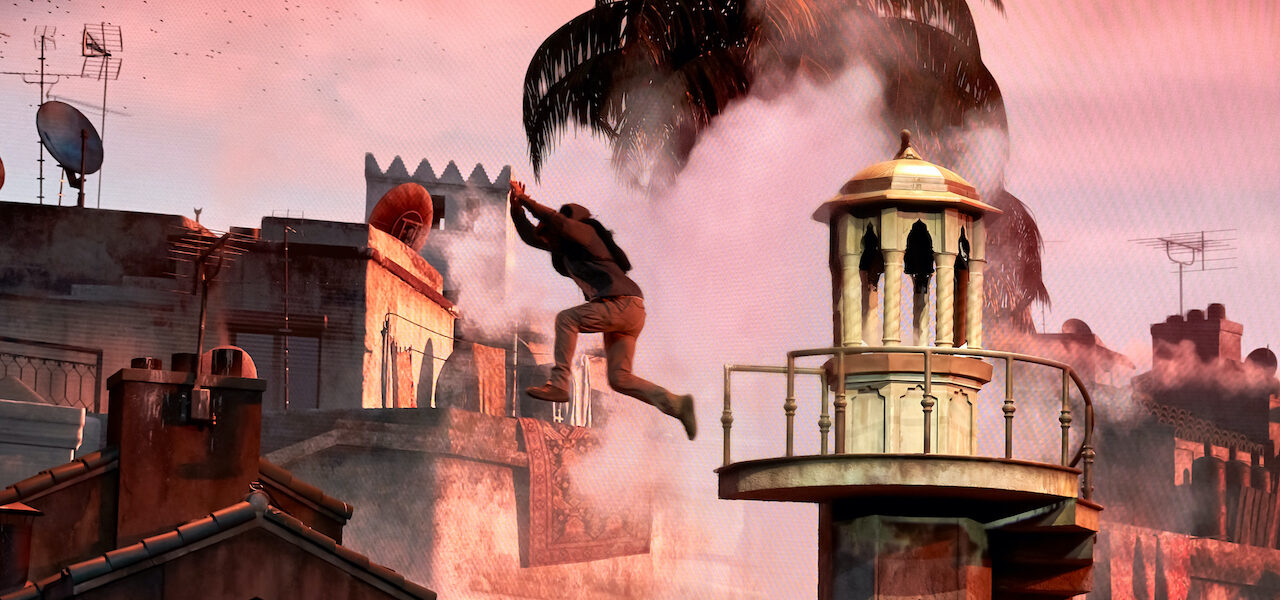
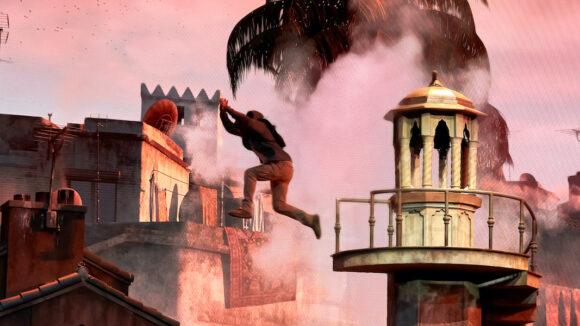
Wild Rides: A Look At The Burgeoning Business Of Animation For Attractions
Last month, Disney announced that it would lay off 28,000 workers at its theme parks in Florida and California. The news revealed the depth of the damage inflicted on the industry by the pandemic. With the spotlight understandably trained on those employees directly affected by the cuts, relatively little has been said about the risk facing parks’ contractors, including the legion cg studios that help create their rides.
It’s easy to forget that, before the pandemic, theme parks and attractions were a prospering business. The world’s top ten theme park groups cleared half a billion visits for the first time in 2018; that number rose to a record 521.2 million last year, with much of the increase driven by China and Asia (according to a report from TEA and AECOM).
As attendance grew and visitor expectations rose, parks began expanding their notions of what a ride should be. Increasingly, the hardware of rides is being augmented with media, as parks try to woo visitors with vast digital experiences that are immersive and sometimes highly interactive. They are often based on major film franchises, from Star Wars to Avatar, and they incorporate elaborate cg imagery.
This trend has enabled many animation and vfx studios to expand into attractions — whether theme park rides or other location-based experiences — as a sideline, and increasingly as a mainstay of their business. The studios may work with dedicated theme park designers, but in any case these projects demand familiarity with the specifics of the industry, ranging from high resolutions and frame rates to a holistic understanding of what visitors want.
What does the pipeline of an attraction-based project look like? What skills are required? How much does this work pay? And what does the future look like as the pandemic rages? To find out, we spoke to four studios involved in the business …
Cinesite is a major vfx studio headquartered in London, whose recent film credits include Marvel’s Black Widow and the Bond film No Time to Die. The company recently delivered its first project for a theme park: The Bourne Stuntacular, based on the Bourne film series, which was produced for Renaissance Entertainment and opened earlier this year at Universal Orlando. The project, which combines live action with effects, was overseen by Salvador Zalvidea, vfx supervisor at Cinesite, who describes the production below:
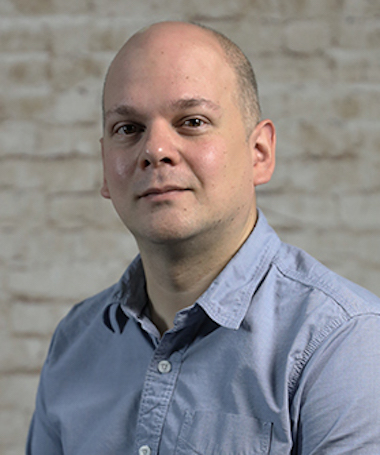
[At Cinesite,] we’ve worked on many action blockbusters over the years. Our artists’ and technicians’ skills in vfx are completely transferable to onscreen theme park attractions. As a result, often our vfx work naturally leads to working on complex theme park rides due to a lot of crossover with thought process and technology.
The skills are completely transferable, but the approach is different. Creating a successful theme park attraction requires as much storytelling skill as it does technical expertise. Working with the latest technologies and techniques, myself and the team have a passion for what we do and the attraction we created for Renaissance Entertainment taught us a lot.
We do not have a dedicated attraction-focused team. There is a core crew at Cinesite which is then bolstered by specifically skilled artists to match each project’s needs. On this occasion we hired an Unreal specialist because we decided to use a game engine to render the Bourne Stuntacular frames.
Using the game engine also provided us one additional feature almost for free: a vr experience. This allowed us to review the show from any seat in the venue and make sure it worked from any angle. It also made us realize that the screen is so big that even at the very back of the venue, one will have to turn one’s head to see both edges of the screen. Integrating Unreal with our tools has required a big effort from our pipeline team and we are looking forward to using them on Cinesite film projects.
The delivery specs were quite high for the Bourne Stuntacular show. We produced the images for the massive bespoke 120-foot-long LED screen. We created over 20 minutes of 9k x 2k 60-fps full-cg photoreal environment — effects and animations. To top that, the whole show is basically seven very long shots, the longest one being more than 2:30 minutes long. To give you an idea: in terms of data to render, one second of this show equals ten seconds of a conventional 2k 24-fps show. Technically this was a huge challenge.
Creatively, we had to take into account the physical restraints of the moving set pieces, the stunts choreography, and the special effects. This meant that we had to be able to fine-tune our timings on location. If we are out of sync even less than a second, the whole illusion is broken. Using our normal pipeline would have resulted in weeks of rendering to see just a small subset of the show, so we decided to use a game engine to render the images.
We were not aiming for real time, but for quicker renders without compromising the final image quality. At the moment, a single image of this show would take more than five hours to render using our traditional pipeline. With Unreal, we were able to render a frame in 90 seconds. The game engine allowed us to get quick iterations on location despite the huge image size and frame rate.
Proximity [of our main office] to the parks is not important. Our clients are quite often abroad, and we’ll go on location when needed. Cinesite also has facilities in the U.K., Canada, and Germany, which allows us to collaborate and work with clients on a global scale across a range of time zones. We do not see remote work as a barrier at all. It is a natural part of how we work (more so these days) and how the industry operates.
Cinesite is actively engaged in talks with both Disney and Marvel about other attractions. Although we are in talks with clients about other theme park projects, there appears to be a lengthy decision-making process currently, as the studios and parks assess the current global climate. There is no doubt that we need entertaining!
Steamroller Studios is based in Mount Dora, Florida — the hometown of two of its founders, which is conveniently situated a stone’s throw from Walt Disney World and Universal Orlando. The company, which employs more than 100 people, specializes in animation for games (including Fortnite), and also works on films and attractions. It has produced its own IP, such as the animated short Spice Frontier. Its attractions business is growing fast, and is now buttressed by a new division at the company: Steamroller Tech. Co-founder and CEO Jalil Sadool explains:
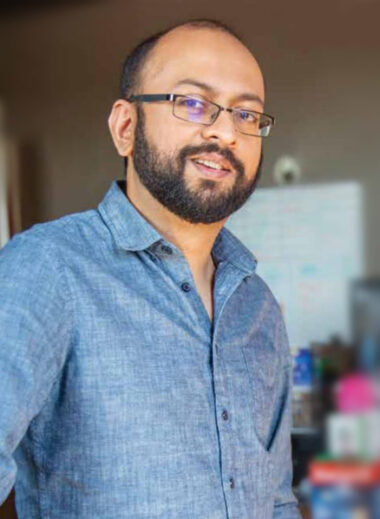
Due to the fact that Universal Studios is in such close proximity, we knew it would be wise to expand our studio and grow a tech side with a focus on theme park experiences. The tech side of our company, Steamroller Tech, was launched about two years ago and has been growing even quicker than our animation side. We work with all kinds of clients, but the theme park industry is definitely our bread and butter.
As much as we enjoyed theme parks and the direction vr and ar were heading, we felt the creative and visual side of these rides could be much better. It didn’t take us long to prove to the team at Universal how higher-quality animations could vastly improve the user experience. What’s cool about this field is that it really is on the cutting edge. Being able to break out of the traditional borders of a 2d screen and try new things is super exciting.
We treat content and animation budgets similarly [regardless of the medium]. The big difference is when we provide the technical support an attraction-based project requires. Then, of course, there’s the extra cost for these technical needs. When we get a full attraction project, we split the task into two main chunks: the technical side and the content side. With the help of our producers, both sides of the company work in tandem to complete the entire project.
We don’t hire based on whether an animator is a “game animator” or a “film animator” or whatever … Animation is animation. Yes, there are different technical challenges and, to a lesser extent, creative challenges. But at the end of the day, the amount of learning that will be needed to fit into a new pipeline, whether it be game, film, or attractions, is fairly minimal.
Having said that, there are quite a few skills that are transferable. For example, if you’re coming from the gaming industry, you’ll find that working in attractions is very similar, especially as theme parks incorporate more and more game design into their attractions.
Schedule-wise, it can be all over the place: some projects need it yesterday, some tomorrow, and some in a few years. There’s really no big difference between traditional screen animation and an attraction-based project when it comes to scheduling. We try to be as flexible as we can, so long as it doesn’t hurt our team.
All the major players [like Disney and Universal] have their own in-house [attractions animation] teams, but they are mostly a skeleton crew. These projects tend to require quite a large creative team. We work right alongside their creatives and producers to try and make the development and production as seamless as possible.
Overtime is notorious in this industry, but we try everything we can to plan better. We’ve turned down many projects because we felt we would burn out the team. Since the pandemic hit we have seen some delays on our theme park side, but honestly not nearly as much as we were anticipating. And we’ve actually become busier with our more traditional animation content.
Theory Studios calls Orlando, Florida home, but its team of 20 has worked entirely remotely from day one, with several employees based overseas. The Blender-based studio was nominated for an Emmy for its cg work on The Man in the High Castle. It provides animation for traditional screen projects, as well as vr and ar, and attractions — a core part of its business. CEO David Andrade speaks to us:
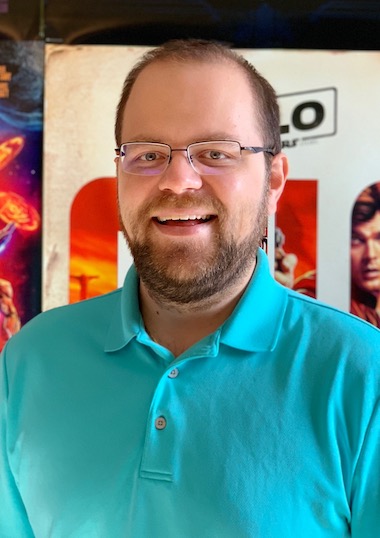
I was laid off from Rhythm & Hues in March 2013, and my family lived in Florida. Orlando was also the closest to the entertainment industry, with the theme park and simulation industries having big hubs there. Those two big industries are what keep Orlando very workable in the world of cgi. Two of the biggest conferences, IAAPA Expo (for theme parks) and I/ITSEC (for simulation) are hosted there every year for that very reason.
So from a work perspective, there is quite a bit around, especially with the major expansions by Disney World and Universal, the two major theme parks. Universal is building a brand-new park in town, plus one in Beijing. Most of that creative media is produced in Orlando. Theme parks have been one of our best businesses.
Even outside the two giants, Orlando is home to a number of designers, creatives, and producers who are hired worldwide to produce entertainment for venues. For example, one of our biggest clients is Renaissance Entertainment [in Celebration, Florida]. They have a hand in designing rides for one of China’s largest theme park operators, Chimelong Group. We also work with Walt Disney Imagineering and ITEC Entertainment. We recently helped create the intro animation and graphics for The Bourne Stuntacular at Universal.
Compared to tv, the attractions industry is way more flexible. Budgets and schedules have longer lead and often revision times, as we need to get all the pieces right for a usually permanent installation. We’ve even seen our margins go from the typical 5%–15% in sub-contracted tv work to 30% or more in theme parks and attractions.
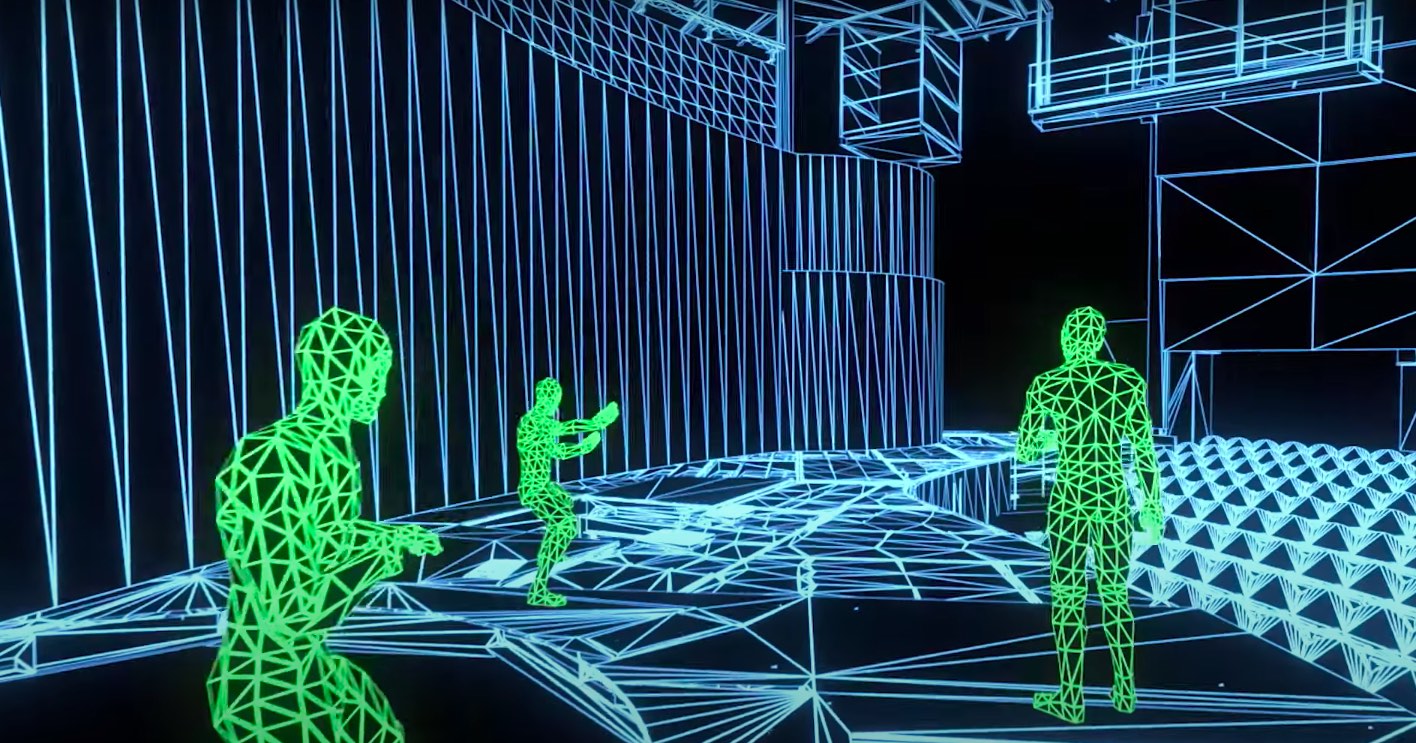
The schedules tend to account for r&d at the beginning, since we are doing things no one has done before. Some of our best jobs are in the blue-sky phase of attraction creation, where we explore all the ideas before budgets become a reality.
Sometimes an artist working for the first time on an attraction-based project gets scared at the 60- or 120-fps requirement! In general the skills are transferable [from other animation pipelines], but let’s take our vr previs for rides for example: your scales and dimensions have to be accurate. You can’t just scale anything in your 3d to make it seem like it fits, because we need both the actual sizes and potential simulations we run to all be as close to accurate as possible.
Having worked with both Disney and Universal, I can say their in-house teams often drive the juicier parts of the project, while vendors do the heavy lifting to get the job done. It’s always hands-on and a team effort too. Demand dipped during Covid from our North American clients, but on the China side we actually have seen an uptick in work requests. Overall, business is down, sadly, but at least some work is still flowing.
Founded in 2002, Tiny Island Productions has grown to become one of Singapore’s leading 3d animation studios. Its original series Dream Defenders has been distributed by Hulu and Discovery Kids, and in 2017 it signed a ten-film co-production deal with China’s Wings Media. It has also been growing its attraction-based business through a Chinese partnership, as founder and CEO David Kwok tells us:

With its population [of almost 1.4 billion], China’s domestic market is huge. As the budgets of animated tv series keep going down, it makes sense for us to look for new and niche markets. With Singapore’s years of good relationship with China and our good understanding of work cultures in both the East and West, we serve as a good partner to the Chinese companies.
We started working on attraction-based work more than a year ago, thanks to a friend from L.A. who works on attraction-based projects. It was him who introduced us to Silkroading, a Beijing company specialized in cultural tourism. Since then they have become our good partner in China. We’ve had a great collaboration. They design the attractions and we focus on content creations.
There are two kinds of attractions we have worked on: the “flying theater” and the 4d rides. The flying theater enables the rider to experience unique movements during a movie being played on a huge dome screen. The sensation of flying is enhanced as the riders’ legs dangle free in the air.
4d rides combine 3d stereoscopic film with physical effects that occur in the theater in synchronization with the film, like rain, strobe lights, or vibration. Most old 4d rides chairs have limited movement. The chairs designed by Silkroading are combined in clusters, and each cluster can maneuver all on its own.
We have been working on 3d stereoscopic and vr projects for several years. Knowledge gained in the past has helped us a lot in these attraction-focused projects. The staff are assigned entirely from within Tiny Island. Currently we have a dedicated team that looks into attraction-focused projects. The new knowledge we have to learn [for each project] is the tech requirements of [the client’s] system. This will affect the way we prepare and plan for pre-production.
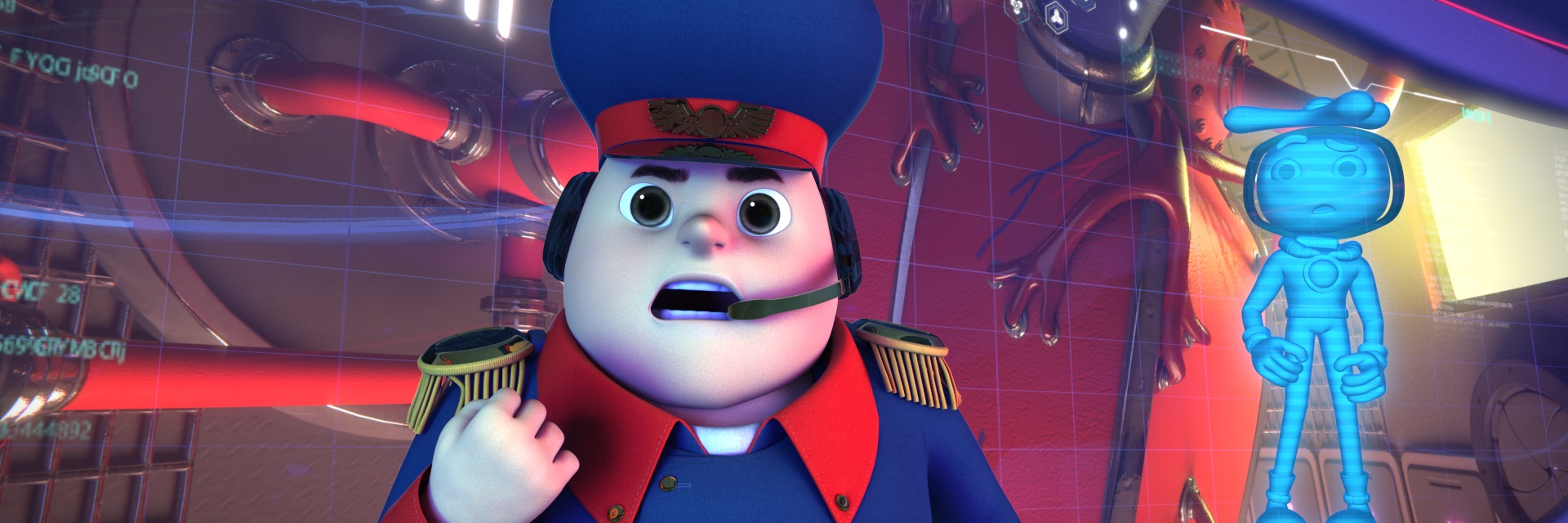
Most of the production pipeline is similar to feature animated films. The key difference is the process involving storyboards, animatics, and layout. It is a combination of storytelling and special attention paid to the audience’s fun and exciting experience, so that the audience can feel the character’s adventure in the story. It’s important for us to know the special features from each ride so that we can incorporate them into the presentation and experience.
The budget per minute is around five to ten times that of a tv budget — quite close to a feature film or games cinematics budget in Asia. But it depends on the complexity of the project, as does the schedule. In China, speed is definitely a major criterion.
It does not matter that our office isn’t located at the park. But to ensure the best results, our crew flies to the Chinese location to inspect the visuals at some point. This is to ensure the visuals synchronize well with the 4d features, and also that the audience will have an amazing experience. [We also] fine-tune the camera moves and vfx.
Our work with parks was affected when China first experienced a full lockdown. Things were slowed down. But China is recovering very, very fast. Things have already started picking up. We are thankful to Silkroading for all the opportunities.
Image at top: “The Bourne Stuntacular.” The interviewees’ comments were edited down from longer interviews conducted by email.
